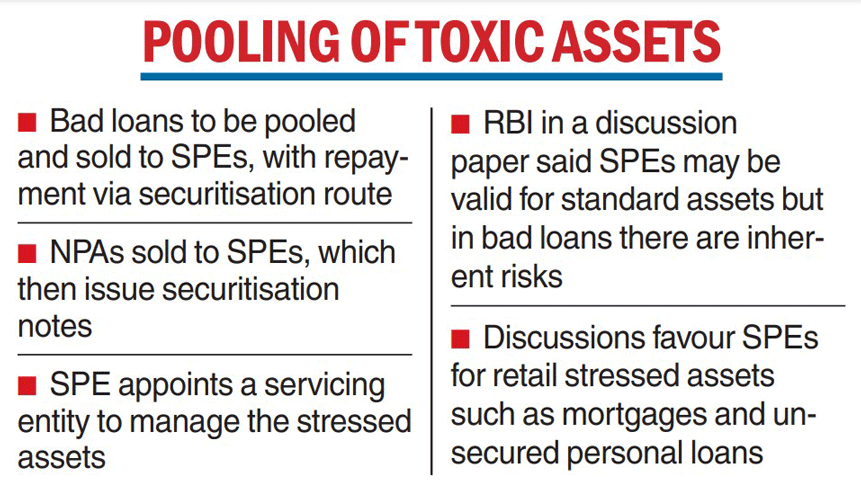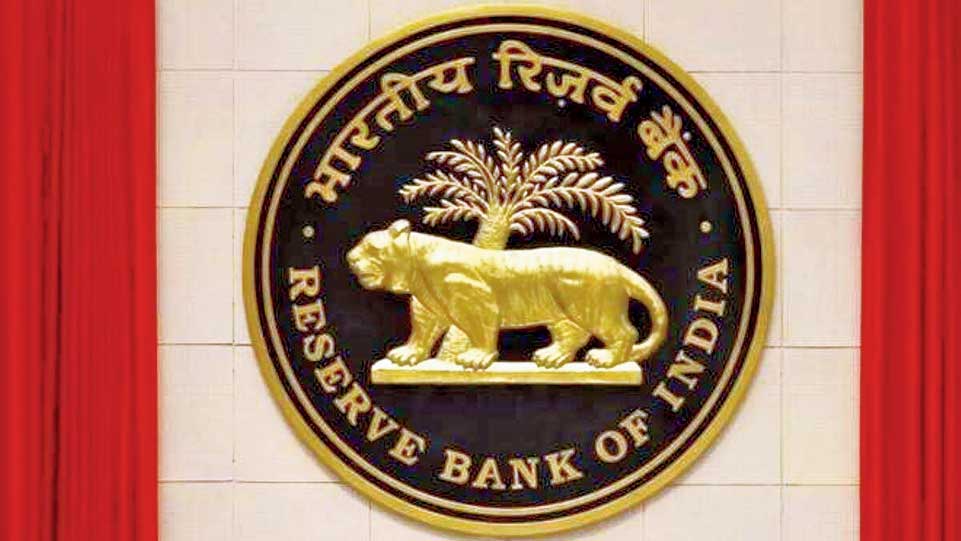The Reserve Bank of India (RBI) has proposed a special purpose entity (SPE) mechanism for the sale of bad loans to interested investors via securitisation.
Securitisation involves the pooling of loans and selling them to SPE, which then issues securities backed by the loan pool.
Currently it is largely available for standard loans. There is no corresponding mechanism for securitisation of non-performing assets (NPAs) through the SPE route. The Securitisation and Reconstruction of Financial Assets and Enforcement of Security Interest Act, 2002 (SARFAESI) provides for the securitisation of such loans, but they have to be undertaken by Asset Reconstruction Companies (ARCs) licensed under the Act.
After the RBI received feedback that it should look at securitisation of NPAs through the SPE route, it had announced on September 30, 2022 that a discussion paper detailing the contours of the proposed framework on securitisation of stressed assets (SSAF) will be issued.
On Wednesday, the banking regulator issued a discussion paper which laid down the broad features of the proposed framework. It also solicited views on various aspects since securitisation of NPAs has features that distinguish it from that done in standard or performing assets.
The discussion paper proposed a mechanism, wherein an originator of NPAs sells to them an SPE that funds this acquisition by issuing securitisation notes. The SPE then appoints a servicing entity to manage the stressed assets. This will come with a fee structure that incentivises them to maximise recoveries on the underlying loans. Investors are then paid based on the recovery from underlying assets, as per the waterfall mechanism depending upon the seniority of the tranches.
The paper put a set of questions for discussions, starting with whether the framework should apply only for loans recognised as NPAs or should it include loans that are in categories like special mention accounts (SMA) or tagged as standard assets.
Citing the challenges that could arise before allowing securitisation of bad loans, the RBI said that the underlying pool of assets in SSAF are different from the securitisation of standard assets (SSA) in terms of the credit risk.
While for SSA, the credit risk associated with the borrower is borne by the investors in securitisation notes, in SSAF the assets are already in default or NPA or deemed as non-performing. Moreover, even as they are securitised at a discount to their nominal value, the investors are exposed to the risk that the workout of resolution exercise may not generate sufficient recoveries to cover the net value of transferred underlying assets.
One of the question that the RBI asked the stakeholders is what kind of loans or assets should be eligible under the new framework, and whether the mechanism should be restricted only to NPAs, or expanded to include standard assets as well, up to a ceiling.
Here, the discussion paper said that securitisation involving only NPAs may have uncertain cash flows, mainly dependent on recoveries from underlying assets. Therefore issuance of securitisation notes on those underlying assets may not have regular servicing, which may be a limiting factor for the universe of investors.












